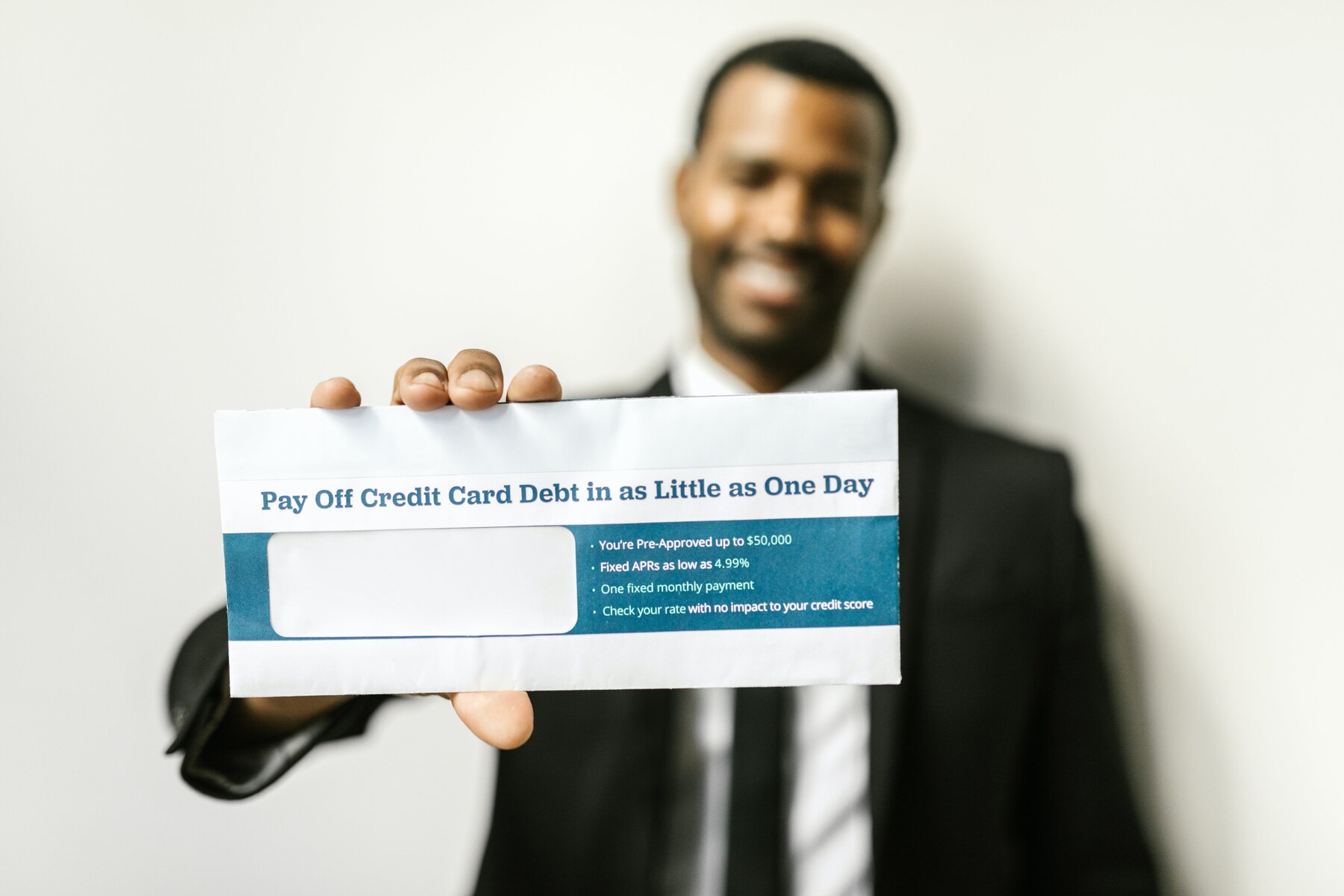Tackling credit card debt is essential for financial well-being, yet it demands discipline and sometimes significant lifestyle adjustments. Our guide on how to pay off credit card debt offers practical strategies to reduce your costs, save on interest, and improve your credit score. Let’s get started.
1. Lock Your Credit Cards
First things first—stop using your credit cards. You must stop accumulating debt in order to whittle away at the amount you already have. But that doesn’t mean you should just start closing old credit cards indiscriminately.
In fact, because your credit utilization ratio is negatively impacted when you close existing accounts, your best bet is to put a “freeze” on your cards. Chase Bank points out that “Debt reduction only works if you stop adding to the balance with new purchases.
To avoid overspending or accumulating additional debt, you can request your account to be locked or frozen.

This will keep your account open, but you won’t be able to use the card to make purchases until it is unlocked.” If you feel you can benefit from a little outside support as you practice financial discipline, contact your credit card providers and find out more about locking your account.
2. Make a Budget
In order to pay off your debt, you must gain control over your finances in general. If you don’t keep a clearly delineated household budget, this is an important starting point.
Chase offers access to a monthly budget worksheet (PDF) where you can calculate your regular expenses—both necessities and luxuries—alongside a look at your overall credit card debt and your monthly repayment obligations.
A budget worksheet like this can help you “understand the big picture of what you earn and what you spend each month. As you enter your expenses, you’ll include any of your current credit card’s minimum payments — which you can use for your next step for paying off credit card debt.”
3. Always Pay More Than the Minimum
Speaking of minimums, whatever approach you take to paying off your credit card debt, it must begin with a larger monthly financial commitment than the minimum. Nerdwallet warns that paying only the minimum will prevent you from making any progress toward your goal of reducing debt.
In fact, if you are carrying a high debt, one of the more common credit missteps is only paying the minimum each month which will almost certainly result in high interest charges. Indeed, the higher your debt, the likelier that your minimum payment will be eclipsed by new interest charges in the coming month.
In other words, even as you make payments, your balance may grow faster than you can shrink it. While making only the minimum payment is clearly better than missing payments or making late payments, it can’t be considered an effective long-term strategy for reducing credit card debt.
In order to actually begin paying down your debt, you’ll need to find a way to pay greater than the minimum each month within the framework of your household budget.
4. Reduce Your Expenses
One way to raise the amount you pay on your monthly minimum is to find some wiggle room among your existing expenses. I’ll be blunt here. That probably means cutting some fun stuff out of your everyday life for a while.
For instance, Ramsey Solutions says “Here are some common unnecessary budget lines you can delete (for now): restaurants, entertainment, subscriptions you don’t use regularly, cable, trips to the coffee shop.

Be honest with yourself and your budget. What things can you live without while you’re paying off that credit card debt?” Remember—when you do pay your debts off, your money will go a lot farther, which means those fancy dinners and premium channel cable packages may yet be in your future.
But for now, you might need to do without them.
5. Monitor Your Household Spend
In addition to managing the money you’re spending on unnecessary expenses, consider how much you’re spending on necessary expenses. Are there ways you can reduce these expenses?
Can you save on utilities by reducing your home’s energy consumption? Can you spend more time clipping coupons and seeking out sale items at the grocery store? From your home maintenance and healthcare expenses to the cost of transportation and consumer products, there are clever ways to save.
Take every opportunity to reign in the costs of keeping the lights on, the water running, and the refrigerator full. Then use those savings to pay more on your monthly credit card bills.
6. Focus On One Debt At a Time
Now that you’ve laid the foundations for managing your debt, you actually have a few options for how best to approach repayment. One option is to simply attack those credit cards and accounts that charge the highest interest rate first.
This is the most direct route to reducing what you spend on interest every month. Alternatively, you could pay off your smallest debts first, then gradually begin dedicating the money previously used to pay these debts to increase what you pay monthly on your larger debts.
Ramsey Solutions calls this the snowball method and advises that while you may be “thinking about those interest rates right now…what you really need is a win. You need one of those credit cards gone. Quickly.”
7. Seek Debt Consolidation Options
As an alternative to paying off individual debts in tandem, you may be eligible for one of several debt consolidation options. One of the most common options is a balance transfer. Here, you would transfer several balances into a single consolidated account, usually one with a temporarily low interest rate.
According to Better Money Habits, you should “take advantage of a low balance transfer rate to move debt off high-interest cards. Be aware that balance transfer fees are often 3 to 5 percent, but the savings from the lower interest rate may often be greater than the transfer fee.”
Moreover, bringing all of your debts together under a single account reduces the overall amount you’ll need to pay each month in order to exceed your minimum payment and dramatically eases the organization needed to keep track of your payment schedule.

8. Get a Personal Loan
In some cases, balance transfer may not be the best option for you. Some balance transfer options limit the amount that you consolidate on a single account.
But a personal loan, according to CNBC, “can be a good alternative to balance transfers if you have a large amount of debt. If your debt is spread out across several credit cards, you can consolidate it into a personal loan.
And depending on your credit score, you may qualify for a loan amount that will cover your entire balance.” Ultimately, the result is the same as a balance transfer consolidation. You’ll be left with a single monthly payment and, for at least a limited time, a more manageable interest rate.
Whether you choose this option or balance transfer will depend upon your personal situation and the options available to you based on the combination of your overall debt and how low your credit score is.
9. Consider a Debt Counseling Service
If you really aren’t sure where to go, reach out for help from a qualified professional. Chase advises “Debt counselors will likewise assess your income and debts and aim to build a roadmap towards a zero balance. They can also leverage their standing to earn lower settlements and interest rates against your accounts.”
Working with a debt counseling service could be the best way forward if you truly feel buried under debt and you don’t know how to begin digging your way out.
10. Get a Side Hustle
Of course, for some households, the situation isn’t that dire. You just need a little extra income so you can up the amount you pay on your credit cards each month. You may be a good candidate from a side hustle.
Whether you have a cool cottage business idea that you can run out of your garage or you’d like to earn a few dollars on the side by driving for Lyft or Grubhub, the so-called “gig economy” makes it a lot easier than it used to be to supplement your primary income. For more on why this is a great way to pay down your debt, check out Ten Reasons to Get Yourself a Side Hustle.
****
If you’re interested in learning about other ways you can improve your credit rating, check out The Best Credit Cards For Building & Improving Credit Scores.